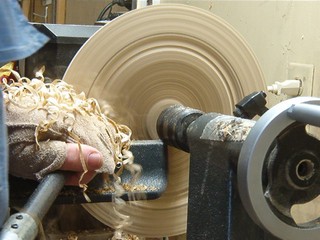
Now it is time to remove the inside of the bowl. Using the 3/8" Oland tool I begin a bit further than the line and make scooping cuts towards it. Then I refine the curve at the edge of the bowl by making a cut along it. The shavings are cool and piling up.
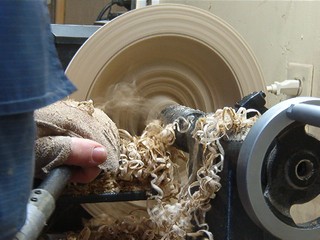
This is simply continued to the bottom of the bowl, checking for thickness as I get closer to the bottom. One of the things to get used to at first is that the bottom of the bowl needs to be as thick as the sides and often is left thicker. I like to refine it from the outside a little later but there is usually plenty for that. Check to make sure the thickness is even. It makes for better drying with less cracks.
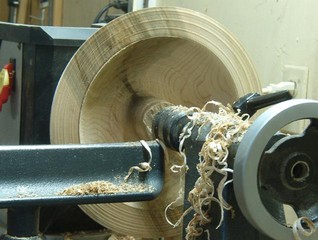
Notice that a tenon is left as the bowl is hollowed. This is obviously to continue to hold the bowl in place as work progresses. Leave it as thick as you feel comfortable with for the size of bowl you are turning.
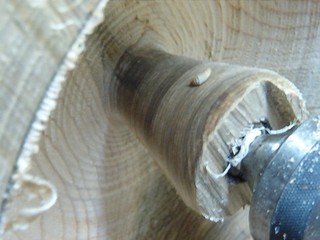
Now is the time, after the bottom is established, to reduce the size of the tenon. Taper it with gentle cuts fprom the top to the bottom. Aim for ¾" to 1" at the bottom. The top can be whatever you like but leave enough for centers to work in it.
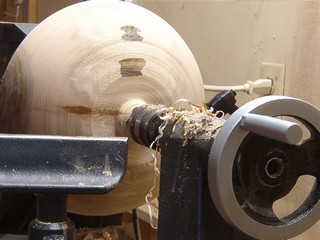
Once again the bowl is flipped around using those center holes in the tenons. This sounds like a hassle but each flip takes about 30 seconds so why not? It makes the turning easier for most of us. If you do not to flip the bowl blank, just move the tool rest and turn from either side.
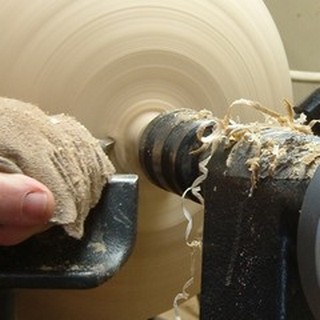
Now decide the likely limit of the bowl bottom and flatten to it. Leave a tenon in the middle to hold the bowl in place. None of these cuts need to leave a pristine surface. We are only roughing, however it is a good time to practice as even a cut as you can. Practice is always nice when nothing is really at stake.






